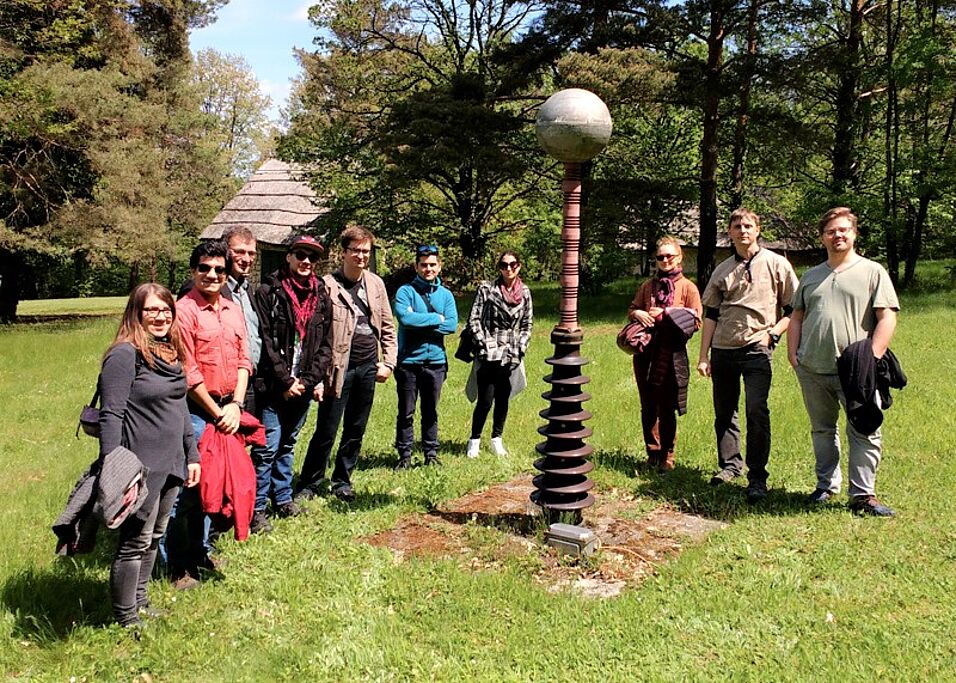The first stop was a temporary seismic station, A004A in Ebreichsdorf, in the epicentral area of the earthquakes from 2013. The station was built by IMGW to record the aftershock and then it was turned into one of the AlpArray stations. We introduced the main parts of the seismic station to the students. The station is equipped with RefTek 60s seismometer. In Sopron, we stopped at the Geodetic and Geophysical Institute, Research Centre for Astronomy and Earth Science, Hungarian Academy of Sciences (www.ggki.hu/en/institute/domiciles/).
We were welcome by the director of the institute Dr. Viktor Wesztergom and we moved to the Széchenyi István Geophysical Observatory in Nagycenk (www.ggki.hu/en/activity/observatory-services/geophysical/), 13 km out of the town of Sopron. Dr. Viktor Wesztergom as well as Dr. Veronika Barta and Dr. Attila Novák showed us many instruments for geomagnetic and aeronomic observatory and field measurements. At the Observatory, they provide geomagnetic observation, telluric registration, potential gradient measurement, vertical current registration, Schumann resonance measurement, VLF registration - whistler observation, ionosphere probing by means of ionosonde, artificial twin corner backscatterers for GNSS technologies as well as meteorological observation.
After lunch in a nice Sopron restaurant, we visited the Geodynamic Observatory in Sopronbánfalva (www.ggki.hu/en/activity/observatory-services/geodynamical-observatory/). Prof. Gyula Mentes explained us the principle of the quartz tube extensometer, which has already been operating for more than 27 years. We also saw the permanent seismic station SOP equipped with STS-2 broadband seismometer. Data from this station is used by some of us via the ORFEUS/EIDA seismic data distribution. The instruments are placed in a tunnel 60 meters underground.
At the end of the day, we had seen temporary and permanent seismic stations, and lots of other geophysical instruments. We also wrote 8 comments in the Széchenyi István Geophysical Observatory’s guestbook in 6 different languages and 3 different alphabets. We would like to thank all who guided us during the excursion and especially to Katalin Gribovszki, who organized our stay in Sopron.

